Potential customers are already looking for businesses like yours on Facebook. A smart Facebook marketing strategy is the only way to connect with them.
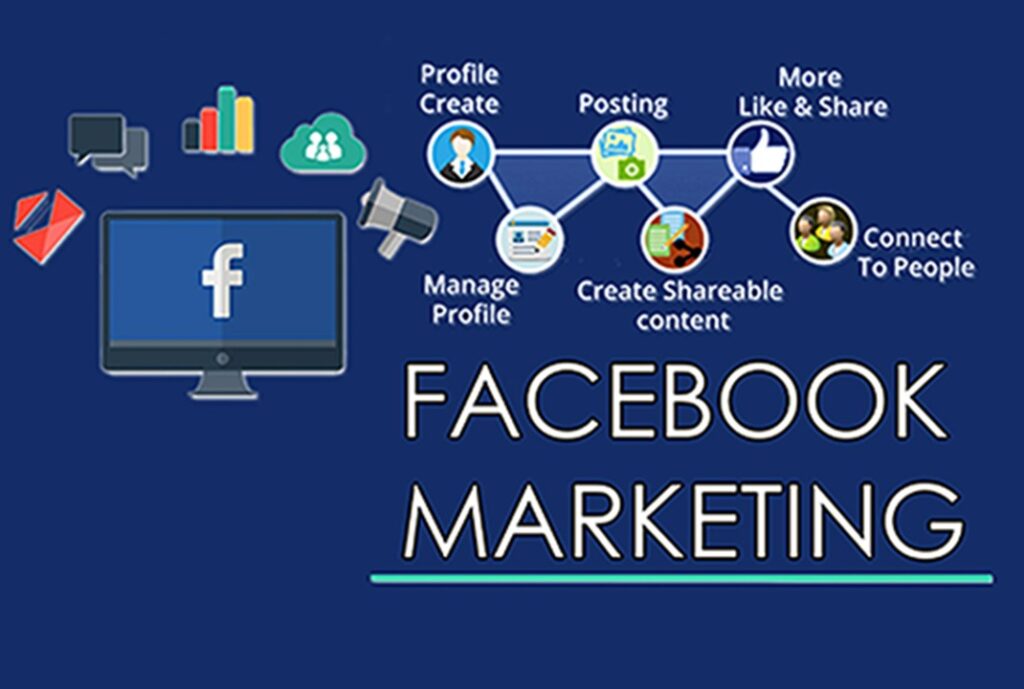

For your information, Facebook marketing is still required in 2024.
Facebook continues to dominate the world of social media with 2.93 billion daily active users—a reputation largely because to all those Minions memes your uncle posted.
For 54.9% of Facebook users, the social media site is their main source for brand research. As a matter of fact, at least once a week, 66% of all Facebook users regularly peruse local company Pages.
Thus, if you’re developing a business, now is the perfect moment to join Facebook. And we’re here to jump right in and swim (yeah, we’re continuing with the metaphor) through the procedure with you to help you get off to a great start with Facebook marketing.
What is Facebook Marketing?
Facebook marketing is the deliberate use of the Facebook platform to market a company or brand.
Facebook marketing has the ability to increase sales of goods and services, increase brand awareness, grow your online audience, and obtain new leads.
Facebook marketing strategies for companies can consist of:
- Original written, visual, or audio content
- Text, image, or video content that is paid for, or “boosted”
- Facebook Reels and Stories
- Facebook advertisements
- Facebook Communities
- Giveaways and competitions
- Chatbots or autoresponders for Facebook Messenger
- Campaigns using influencers in marketing
- Facebook Stores
- Facebook Live broadcasts videos
How to set up Facebook for business
You can include a lot of sophisticated methods and premium services in your Facebook business plan, but first you must create a Facebook Page for your company.
Then, if you really want to go all the way, you may create your Meta ad account and have your account confirmed, but let’s take things one step at a time.
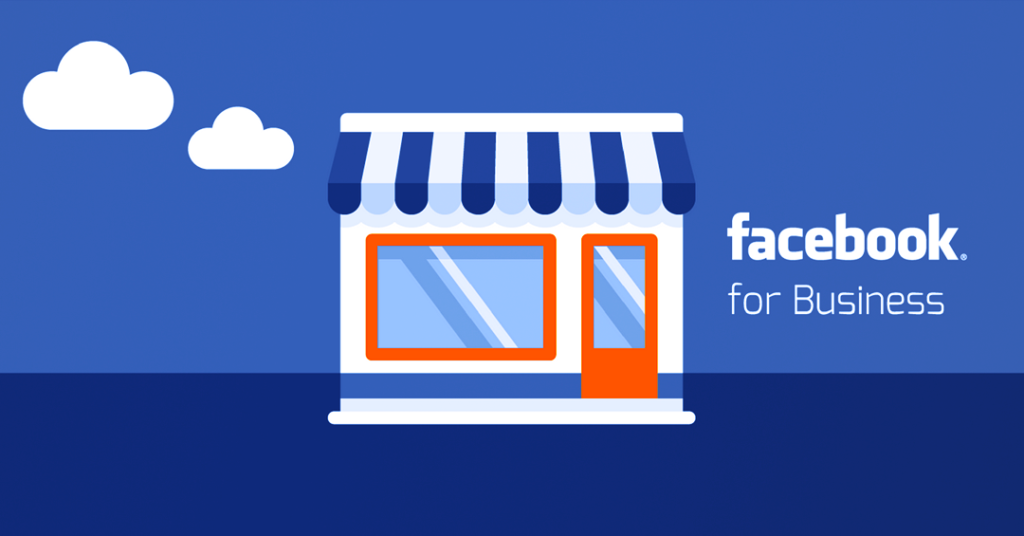

Set up a Facebook Page for your business
1. Before you start, make sure you have a personal Facebook profile. Next, select Create New Page by clicking the Pages symbol (flag) on the website’s left side.


2. Incorporate your Page name and choose the relevant company type.
3. After entering the details for your company bio, click Create.


4. From here, you may modify the action button, add profile and cover photos, and add extra information like contact and location.
5. To make your page public for everyone to view, ask your friends to follow it, then click Next and finally Done.
Here’s a more thorough explanation of how to create a Facebook Business Page.
Verify your Facebook Page for Business
Having a blue “verified badge” on your Facebook Business Page is completely optional, although it could help your marketing approach. If your page has a verified badge, it means Facebook has validated that this is the real, official Page that represents your brand.
A recognized badge conveys authority and trust, which can reassure clients and supporters (and help foil imitators and scammers in their tracks).
Make sure your Facebook Page satisfies all the requirements for a badge before submitting an application for verification. Your Page has to be…
Genuine: Act as an actual company.
Unique: As only one Business Page per brand (apart from language-specific variants) may be validated, make sure your company only has one Page up and running.
Complete: Add a photo to your Page and complete your About section. (Pro tip: Prior to applying for verification, your Facebook Business Page has to have at least one post.)
Notable: Meta essentially needs to judge you as relevant, which is a subjective and difficult need to meet. Is your company a well-known one? Does your brand currently have a reputation? You may find it difficult to persuade Meta that you require a verification badge if you’re a startup with no prior internet presence or an established company that has functioned covertly.
Ready? Simply complete this Verify Your Page form, then cross your fingers and wait for the Meta authorities to grant your request.


Start an ad account
Even though you may create a strong Facebook presence just with organic content, your Facebook Page will also require an ad account if you want to pay to promote posts or start campaigns. Here’s how to configure that.
1. Navigate to the Business Settings.
2. From the menu on the left, select Accounts. Select Ad Accounts.
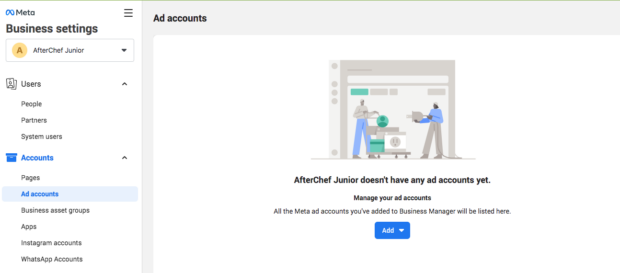

3. Select “Create a new ad account” from the Add dropdown menu (it is blue when you click it).
4. Proceed as directed thereafter!


You’ve also got the option to add an existing ad account or request access to an ad account.
How to create a Facebook marketing strategy in 7 easy steps
1. Define your audience
Prior to taking any action, you should identify your ideal potential consumer and what they would like to see on Facebook. Next, base your content and marketing plan around that.
This is said in every article regarding social media marketing.
…because it is the case.
You must, at the very least, define your target audience by responding to the following questions:
- Which age bracket do they belong to?
- What is their residence?
- What kinds of jobs or duties do they have at work? (Especially pertinent to B2B brands.)
- Which issue do they have with [your product/industry]? (How are you, the answer?)
- When and how do they utilize Facebook? (At work, home, scrolling through dread before night?)
Not sure where to begin? View the demographics of your current audience by using Audience Insights in Meta Business Suite if you have followers on your Facebook page.
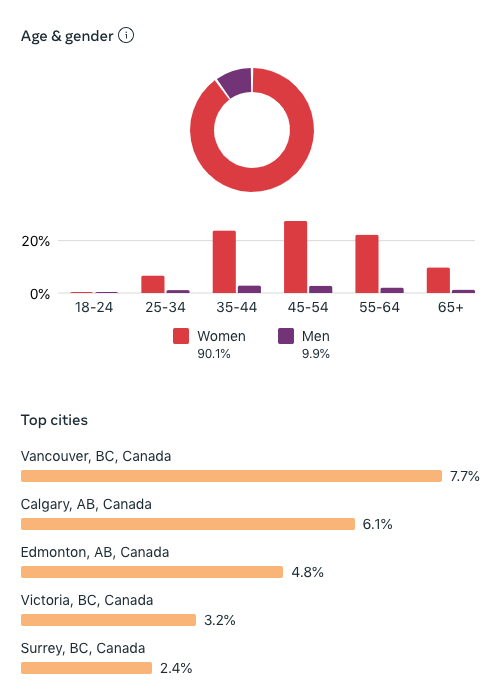

Do the customers you intend to attract match your data? Excellent, keep up the fantastic job. Not too much? Make the necessary adjustments to your content strategy and keep an eye on your insights to evaluate what works best for converting your target audience.
Do the customers you intend to attract match your data? Excellent, keep up the fantastic job. Not too much? Make the necessary adjustments to your content strategy and keep an eye on your insights to evaluate what works best for converting your target audience.
2. Define your goals
What makes you desire to be followed? What action do you desire from them? The majority of businesses say, “Buy something.”
It’s not always about money, though. Other typical objectives for a Facebook page include:
- Increase brand recognition
- Boost client support
- Keep your brand image constant on social media.
- entice people to a specific place
Your entire marketing plan will determine your Facebook marketing objectives.
3. Plan your content strategy
No need to overcomplicate this. Your content strategy is:
- What you’ll post
- When you’ll post it
What to post
Will you give us a peek at your working behind the scenes? Will you publish special prices? Will you keep it serious or throw in some entertainment and games?
Go crazy with concepts in your imagination—ha! I’m kidding. You will post content that your audience requests, correct? based on the extensive study you conducted in step 1?
However, creativity is welcomed. Combine your understanding of your target market with your best guesses regarding performance. (Surprise!—we’ve done the legwork on all the hottest social media trends, saving you time.)
Consider your Facebook content plan in terms of buckets. Every bucket has a subject.
For example:
- Business news
- Business updates
- Tuesday Tips: a brief guide for your program that you share
- Evaluations and testimonials
New Products or Promotion
You understand. And you know what adds to the enjoyment of everything, even creativity? Guidelines!
Here are some traditional guidelines for social media content strategy:
- The rule of thirds: One-third of your content is your ideas/stories, one-third is direct interaction with your audience, and the last third is promotional content.
- The 80/20 rule states that 80% of your material should be educational, entertaining, and informing, with 20% designated for promotion.
When to post it
The final component of the jigsaw is choosing when to post what you’ve decided to share.
Facebook Audience Insights, as previously indicated, can be helpful in this situation, however according to our study, the ideal time to post on Facebook is between 8 a.m. and Tuesdays and Thursdays at 12:00.
Naturally, though, that is a very broad generalization. Experiment, as with everything else in your plan! See when you get the greatest engagement by experimenting with different times.
4. Make your page more optimized.
Regardless of how long you’ve had your Facebook business page set up, be sure to have:
- A cover photo and a profile photo (your logo works excellent here).
- An “Action” button, like “Book Now,”
- Contact details, such as email address, phone number, and URL.
- A thorough section on the About page.
- A pinned post with your most recent deal, promo, or help guide.
- A unique URL for the page.
- A precise category for businesses. (Ours is a “Internet business.”)
Make sure you’ve included a street address if your company has a physical presence.
Use Commerce Manager to have your products appear in the new Facebook Shop tab if you run an online store. Not sure how to do that? This is the setup process for a Facebook shop.
6. Set up Facebook Pixel, now known as Meta Pixel.
Installing a tiny bit of code on your website called a meta pixel enables tracking, testing, targeting, and analytics for ads on Facebook and Instagram. It just needs to be configured once for each website. (And, hold on, you have already connected your Facebook page to your Instagram account, correct?)
In order to set up Meta Pixel:
1. Open Facebook Events Manager and log in. Click the Connect data sources menu item on the left.
2. After selecting the Web as the data source, click Connect.
3. Give it a name and type the URL of your website. Depending on the platform that powers your website, a one-click integration might be offered. If not, manually install the code by following the instructions.
4. Choose either Meta Pixel Only or Conversions API and Meta Pixel as your setup option, then adhere to the instructions.
If that’s not enough direction, we also have more detailed installation instructions for Meta Pixel available here.
7. Try Facebook advertising
Traffic and sales from Facebook advertisements can soar, but the process of starting a campaign can be daunting.
I’m sure you’re also curious about the cost of Facebook ads.
With 2.96 billion users as of 2024, Facebook has the biggest potential viewership of any social media network. Stated differently, that represents 36.9% of all people on Earth who are older than 13.
Therefore, for the majority of businesses, Facebook is the ideal place to start when it comes to social media advertising. Although there is a lot to learn, it is made easier with our comprehensive tutorial on how to create your first Facebook ad campaign.
When to start using Facebook ads
Facebook slang for converting a normal Page post into an advertisement is “boosting” the post.
The gateway advertisement senior content marketers cautioned you about is called boosting. Conversions, audience expansion, and a renewed respect for digital advertising are all positive side effects of success.
When to think about it: If you want to give Facebook advertising a go and are brand-new to the platform. Boosted posts are reasonably priced because you may set your budget up in advance. (But keep in mind: If an advertisement isn’t precisely targeted, it won’t be effective.)
The easy way: Boost a post
Facebook slang for converting a normal Page post into an advertisement is “boosting” the post.
The gateway advertisement senior content marketers cautioned you about is called boosting. Conversions, audience expansion, and a renewed respect for digital advertising are all positive side effects of success.
When to think about it: If you want to give Facebook advertising a go and are brand-new to the platform. Boosted posts are reasonably priced because you may set your budget up in advance. (But keep in mind: If an advertisement isn’t precisely targeted, it won’t be effective.)


When to think about it: If you want to give Facebook advertising a go and are brand-new to the platform.
Boosted posts are reasonably priced because you may set your budget up in advance. (But keep in mind: If an advertisement isn’t precisely targeted, it won’t be effective.)
The advanced method: Create your first Facebook ad campaign
A comprehensive Facebook ad campaign requires a lot of work, including ad groups, creative alternatives, launch dates, awareness advertisements, conversion ads, numerous formats, and copy options.
However, we can assure you that it is worthwhile. The key to realizing all of your social media goals is combining paid and organic Facebook content.
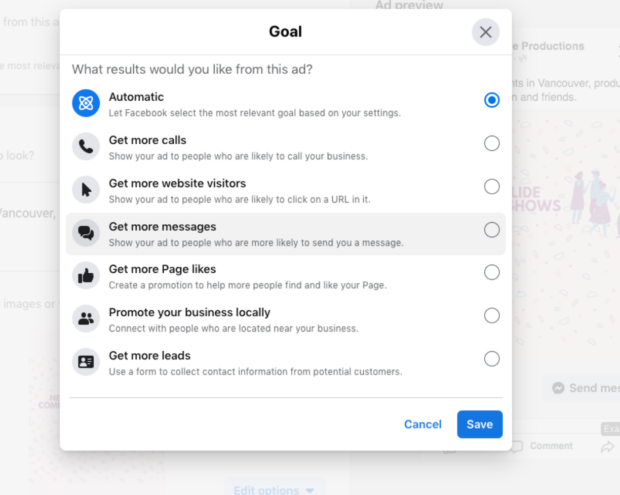

When you should consider it: You want to build focused momentum for a product launch, event, or other promotion.
Paid campaigns can work with budgets of all sizes, but spend time honing your targeting skills first. Experimenting with boosted posts can help dial this in.
You know when you see an ad and think Wow, I’m the target market? Like when an ad for a Millennial-pink saucepan starring Carly Rae Jepsen drops in your Instagram feed? That’s how you want your ad’s viewers to feel: “This is for me.”
Consider hiring an agency or freelance consultant to help plan your first campaign. You’ll learn a lot and optimize your chances of success.
How much does it cost to market on Facebook?
It should be noted that a lot of Facebook marketing is free. You don’t need to invest any money to develop and publish content all day long. Your time may be the only thing necessary for you to attain successful reach and engagement.
However, you can also make a financial investment in your Facebook business marketing plan by running an advertisement or paying to promote your content. You have the freedom to choose your own spending limit, so you could run a $5 or a $50,000 advertising campaign. Everything relies on the kind of advertisements you employ and the audience you wish to reach. The short version is that while we go into great detail about the ad-price benchmarks here, your mileage may vary.
You should budget extra for any collaborations you may be thinking about having with influencers or creators. However, the cost of that would also depend much on what you’re requesting and who you’re dealing with.
Conclusion
In conclusion, a deliberate and all-encompassing approach is needed to successfully navigate the ever-changing Facebook marketing landscape in 2024.
Businesses need to stay aware of new trends, algorithm adjustments, and user behavior as social media keeps changing.
Success will mostly depend on utilizing a mix of sponsored and organic techniques, encouraging real interaction, and maximizing the potential of cutting-edge features.
Moreover, enterprises may stay relevant and prosper in a dynamic digital environment by closely monitoring data analytics and fine-tuning campaigns using real-time insights.
Understanding the subtleties of Facebook marketing is essential for companies hoping to establish a memorable and powerful online presence in 2024, given the intense competition and changing expectations of consumers in this period.

